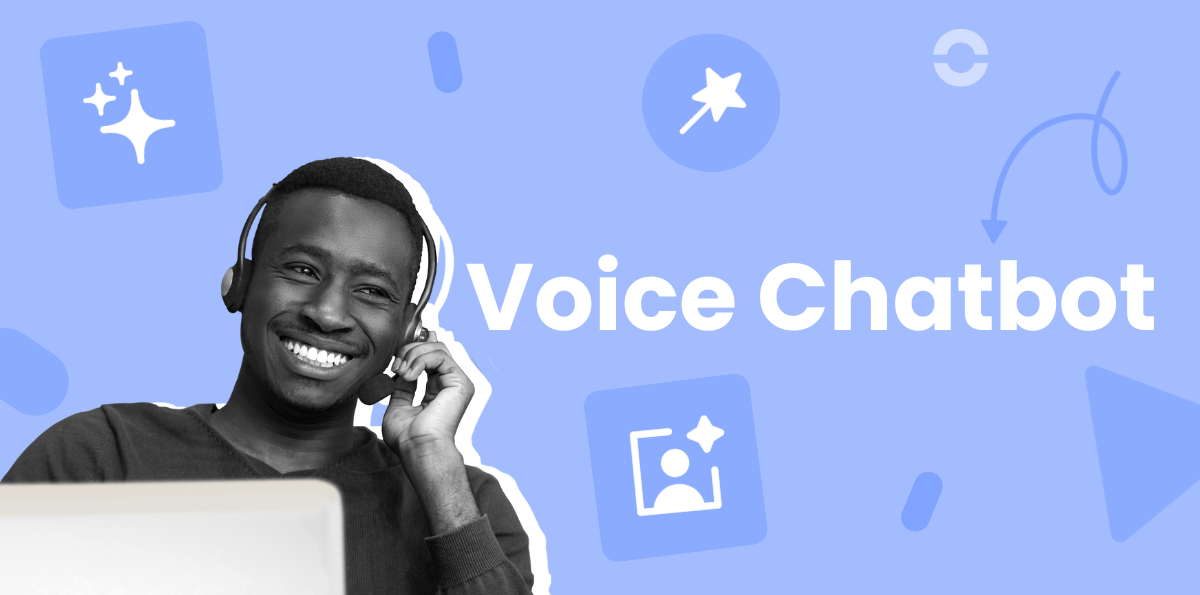Summary
These sophisticated voicebots, powered by advanced technologies such as natural language processing, natural language understanding, and automatic speech recognition, are revolutionising the way companies interact with their customers.
Voice chatbots offer a seamless, voice-enabled user experience, allowing customers to receive immediate support, personalised recommendations, and round-the-clock assistance, all through the convenience of natural speech.
Whether you're looking to streamline your contact centre operations, reduce wait times, or simply provide a more personalised customer experience, AI chatbots, especially voice chatbots, are poised to transform the customer service landscape.
Table: Top Voicebots
| Voice Chatbot | Used For | Price |
|---|---|---|
| ChatGPT | Content writing, research | Free, ChatGPT Plus, ChatGPT Pro prices only available in US dollars |
| Google DialogFlow | Customer support, integration with Google Cloud, voice interface platforms | Priced monthly based on edition and requests |
| Bland AI | Customer service, sales automation, voice cloning | Prices only available in US dollars, , there are extra fees for advanced features |
| Play.ai | Customer service, voice cloning, commercial API access | Free: 30 minutes, after that there are charges but prices are only listed in US dollars |
| Convoso | Sales automation, customer service, outbound dialler | Custom pricing based on usage and features |
| ElevenLabs | Voice cloning, customer service, content creation | Custom pricing for enterprise solutions |
| IBM Watson Assistant | Customer service, voice-enabled chatbots, integration with various platforms | Priced based on usage and features; custom plans available |
| LumenVox | Speech recognition, customer service, IVR systems | Priced based on licensing and usage; custom plans available |
| Cognigy | Customer service automation, voice-enabled chatbots, omnichannel contact centre software support | Priced based on edition and usage; custom plans available |
| VOIQ | Sales automation, customer service, outbound calling | Custom pricing based on usage and features |
List: Best Voice Chatbot Tools
ChatGPT
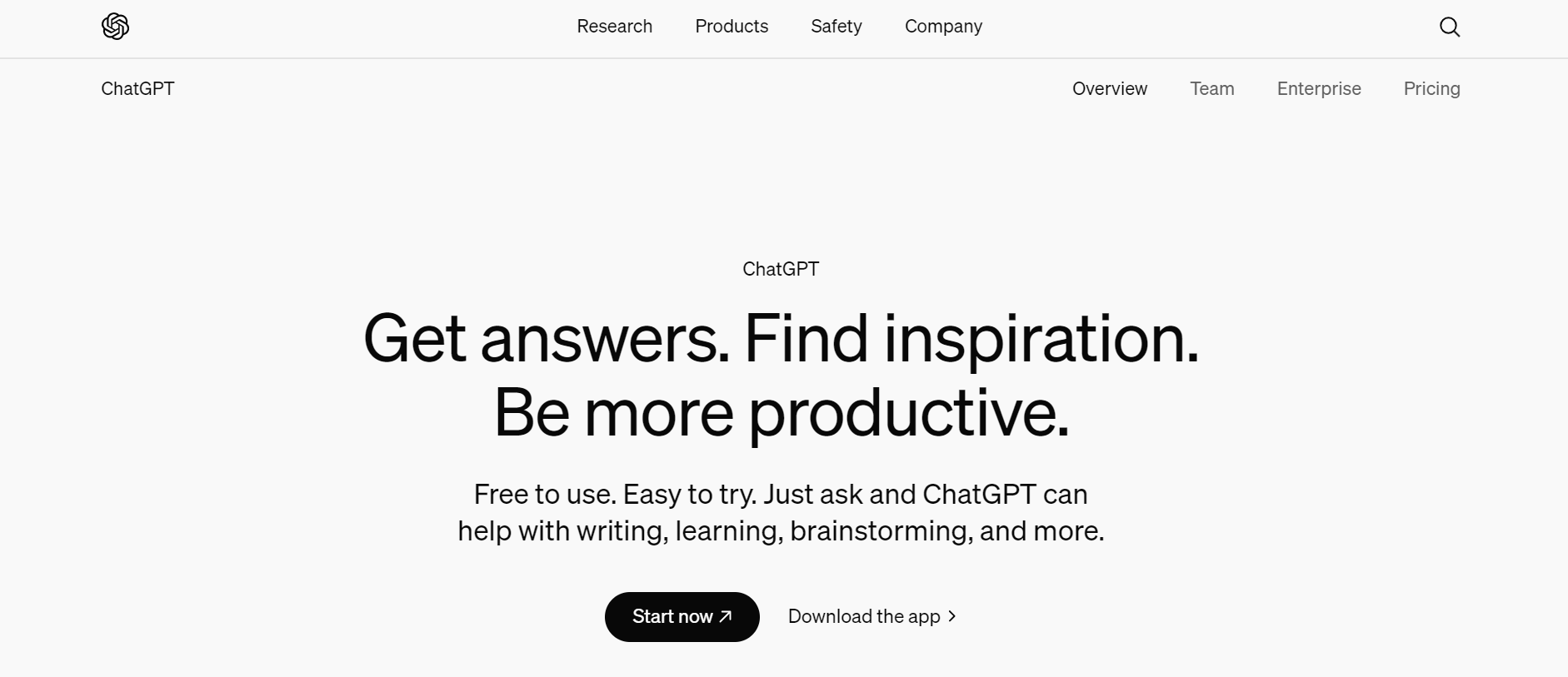
ChatGPT, developed by OpenAI, is a revolutionary voice chatbot that integrates advanced voice mode within its capabilities. This feature enables the chatbot to perform conversational tasks with a high level of emotional intelligence and character voicing. It uses a sophisticated language model to understand context, adopt different personas, and convey a wide range of emotions, making interactions feel more natural and responsive. For example, some businesses input specialised ChatGPT prompts to refine their customer service scripts.
💡Best For
Customer service, content creation, and providing emotionally intelligent interactions.
🤖Technology
Advanced language model, natural language processing, natural language understanding, and automatic speech recognition.
ChatGPT Advantages✅
- Provides emotionally intelligent and context-aware interactions, enhancing user experience.
- Can adopt different character voices and convey a wide range of emotions.
- Integrates seamlessly with various applications and services.
ChatGPT Disadvantages❌
- Currently limited to OpenAI's ChatGPT Plus subscribers.
- Requires manual prompting and interaction.
- May have limitations in handling highly complex or niche queries.
Google DialogFlow
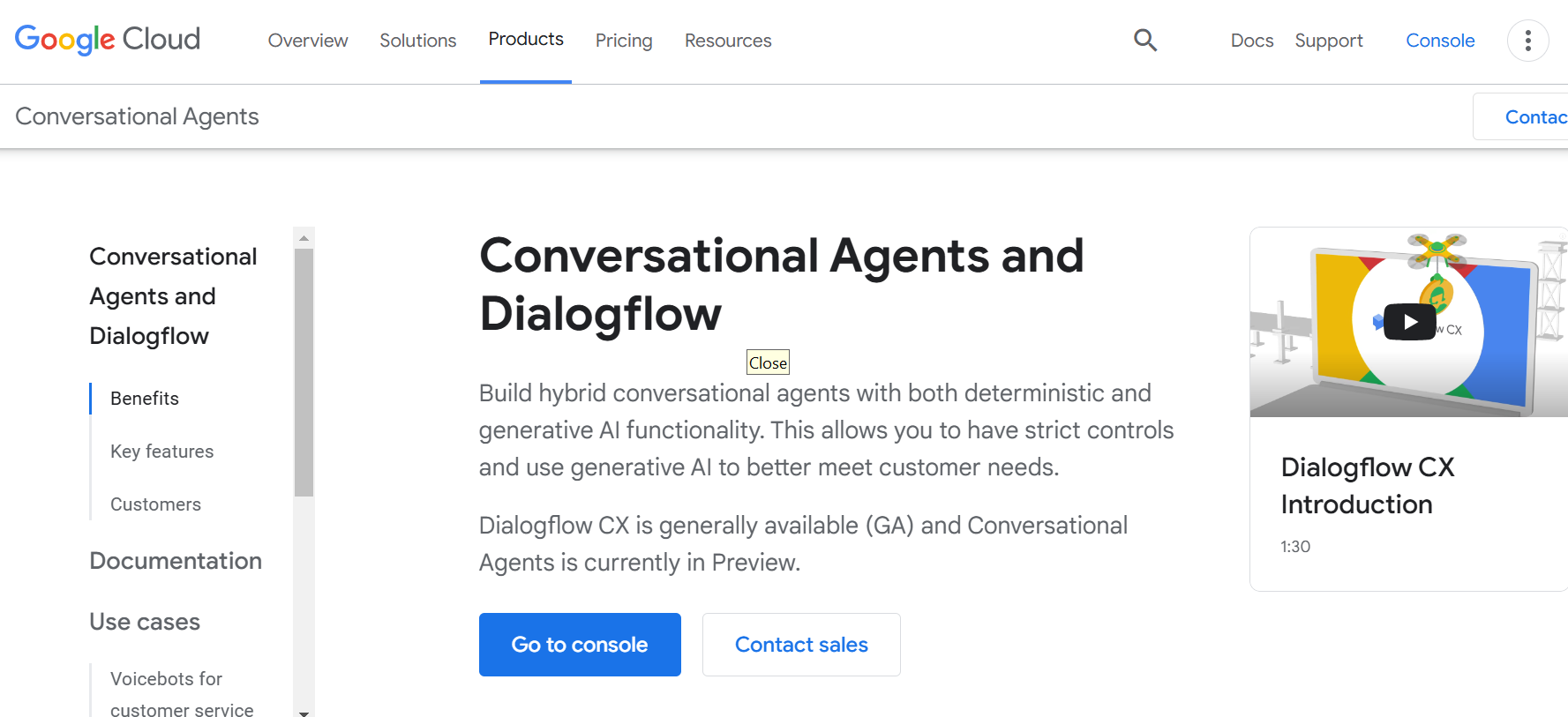
Google DialogFlow is a powerful tool for building voice-enabled chatbots, particularly useful for customer support and integration with Google Workspace services. It leverages Google's robust speech recognition and natural language processing capabilities to create interactive voice interfaces.
💡Best For
Customer support, integration with Google Cloud, and voice interface platforms.
🤖Technology
Speech recognition, natural language processing, and natural language understanding.
Google DialogFlow Advantages✅
- Seamless integration with Google Cloud services and other Google tools.
- Highly accurate speech recognition and natural language processing.
- Flexible pricing model based on usage.
Google DialogFlow Disadvantages❌
- Can be complex to set up and manage for beginners.
- Costs can add up based on the number of requests and features used.
- May require additional development to customise fully.
Bland AI

Bland AI is known for its advanced voice cloning capabilities and is used in various applications such as customer service, sales automation, and commercial API access. It offers a unique blend of voice cloning and character voicing, making interactions more engaging.
💡Best For
Voice cloning, customer service, and sales automation.
🤖Technology
Voice cloning, natural language processing, and automatic speech recognition.
Bland AI Advantages✅
- Advanced voice cloning capabilities that encapsulate every accent and dialect.
- Real-time voice cloning and voice generation API available.
- Cost-effective with pricing based on per-minute usage.
Bland AI Disadvantages❌
- May have limitations in handling complex emotional contexts.
- Requires careful setup to ensure high-quality voice cloning.
- Additional fees for advanced features.
Play.ai
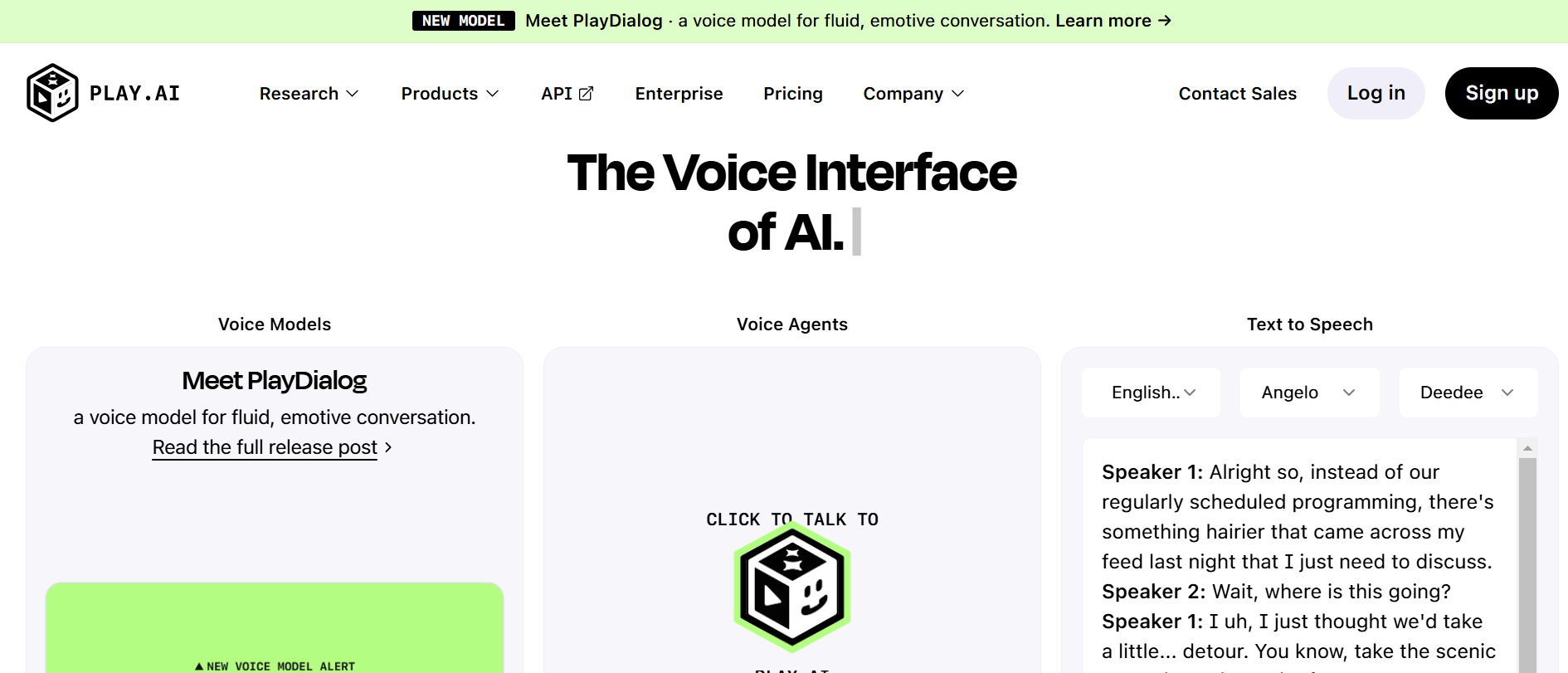
Play.ai is a leading AI voice generator that offers ultra-realistic text-to-speech voiceovers and a voice model for fluid, emotive conversations. It is ideal for generating expressive speech and powering conversational chatbots.
💡Best For
Text-to-speech voiceovers, conversational chatbots, and voice cloning.
🤖Technology
Text-to-speech, natural language processing, and natural language understanding.
Play.ai Advantages✅
- Ultra-realistic text-to-speech voices with human-like intonation.
- Supports 142 languages and accents.
- Real-time voice generation API available.
Play.ai Disadvantages❌
- Can be expensive for large-scale or enterprise use.
- May require technical expertise to fully integrate.
- Quality can vary depending on the specific voice model used.
Convoso

Convoso is a robust platform focused on sales automation and customer service, utilising advanced voice technology to enhance outbound call centre software and customer interactions.
💡Best For
Sales automation, customer service, inbound and outbound calling.
🤖Technology
Natural language processing, automatic speech recognition, and custom voice integration.
Convoso Advantages✅
- Highly effective for sales automation and outbound calling.
- Customisable to fit specific business needs.
- Improves efficiency in customer service operations.
Convoso Disadvantages❌
- Custom pricing can be costly for some businesses.
- May require significant setup and training.
ElevenLabs
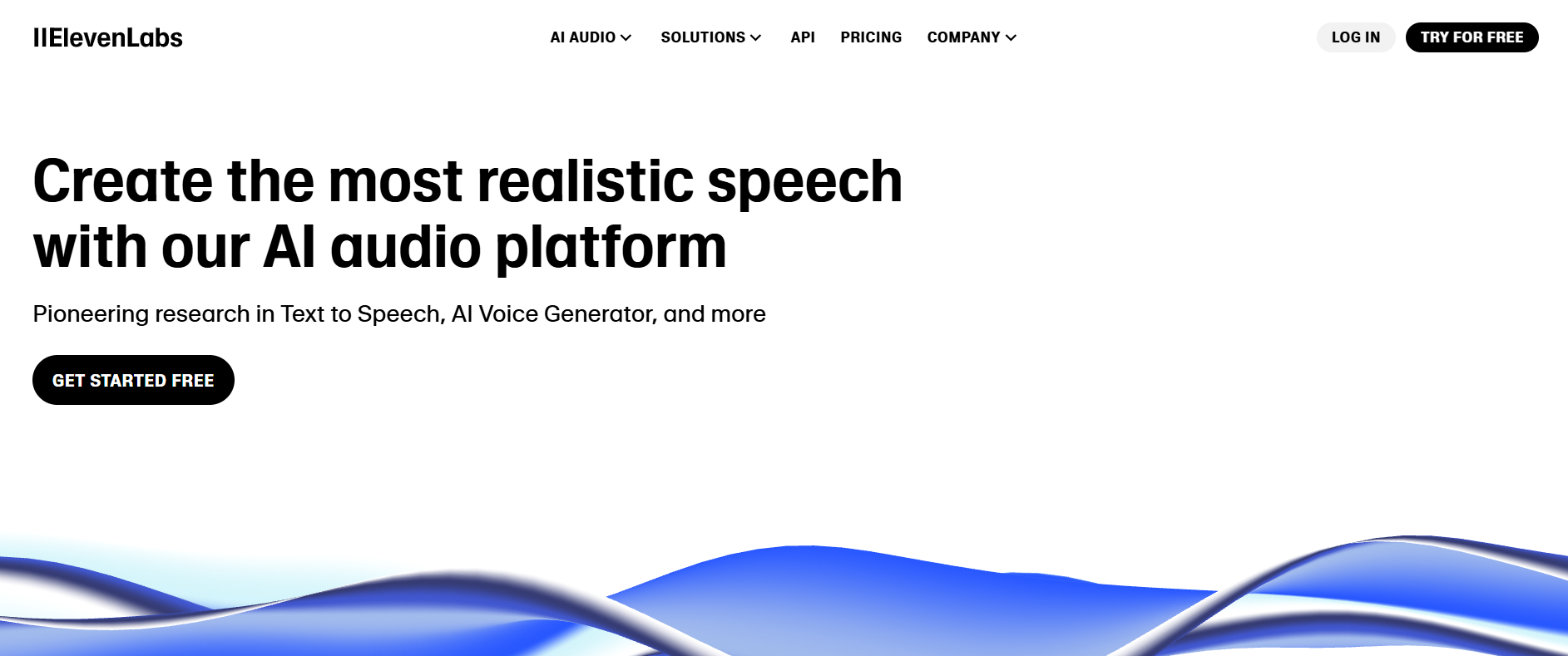
ElevenLabs specialises in voice cloning and AI-powered voice generation, offering advanced solutions for customer service, content creation, and various applications requiring realistic voice interactions.
💡Best For
Voice cloning, customer service, and content creation.
🤖Technology
Voice cloning, natural language processing, and automatic speech recognition.
ElevenLabs Advantages✅
- Advanced voice cloning with high realism.
- Customisable voices to fit different personas and scenarios.
- Enhances user experience with natural-sounding voices.
ElevenLabs Disadvantages❌
- Custom pricing can be expensive for enterprise solutions.
- May have ethical concerns related to voice cloning.
- Requires careful management to ensure quality and authenticity.
IBM Watson Assistant
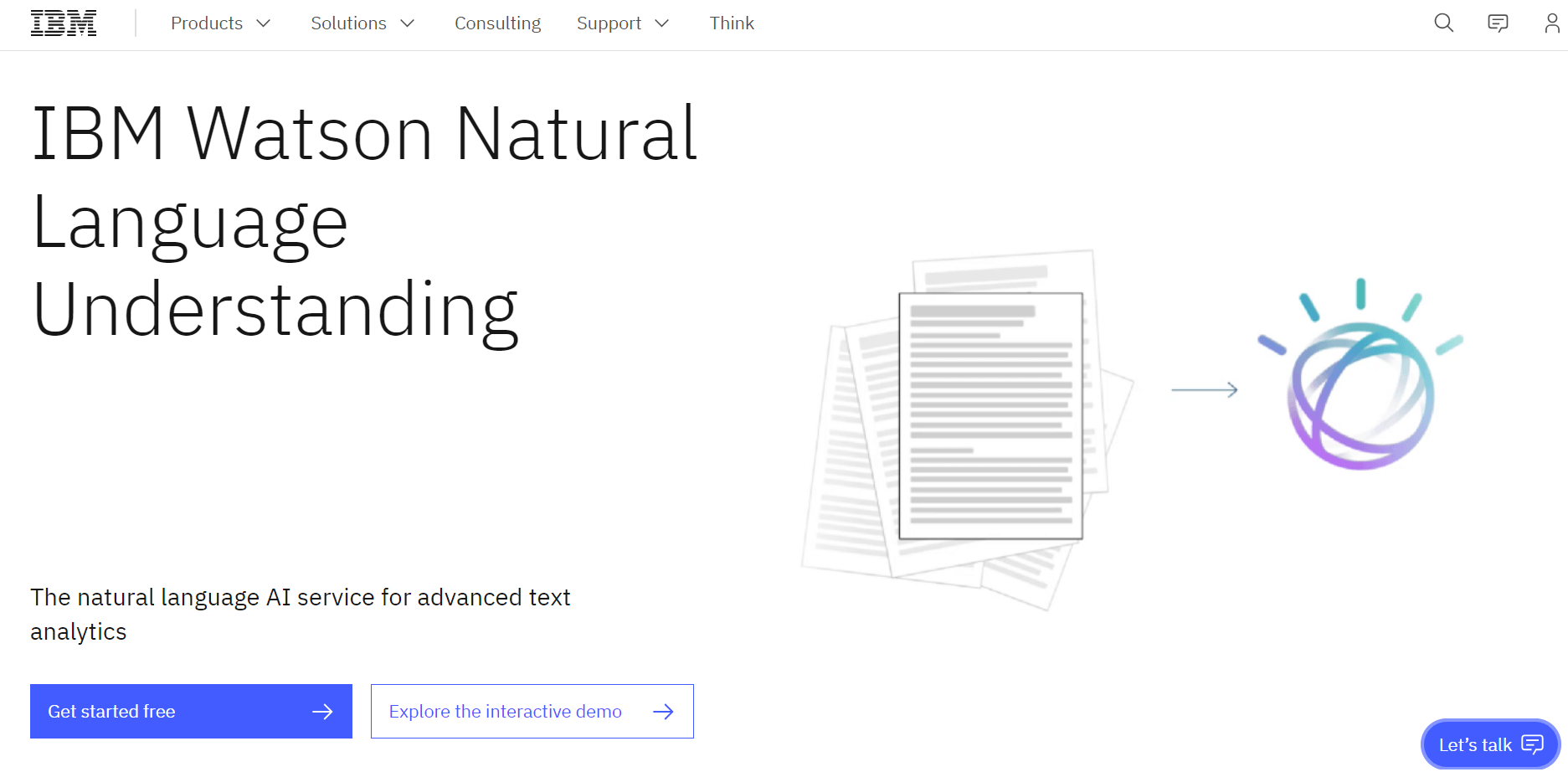
IBM Watson Assistant is a powerful tool for building voice-interactive applications, integrating Speech-to-Text, Watson Assistant, and text-to-speech technologies to provide a seamless user experience.
💡Best For
Customer service, voice-enabled chatbots, and integration with various platforms.
🤖Technology
Speech-to-text, natural language processing, natural language understanding, and text-to-speech.
IBM Watson Assistant Advantages✅
- Highly accurate speech recognition and natural language processing.
- Seamless integration with IBM Cloud services and other platforms.
- Provides a fully interactive, hands-free user experience.
IBM Watson Assistant Disadvantages❌
- Can be complex to set up and manage, especially for beginners.
- Costs can be high depending on the usage and features.
- Requires secure authentication using IAMAuthenticator.
LumenVox
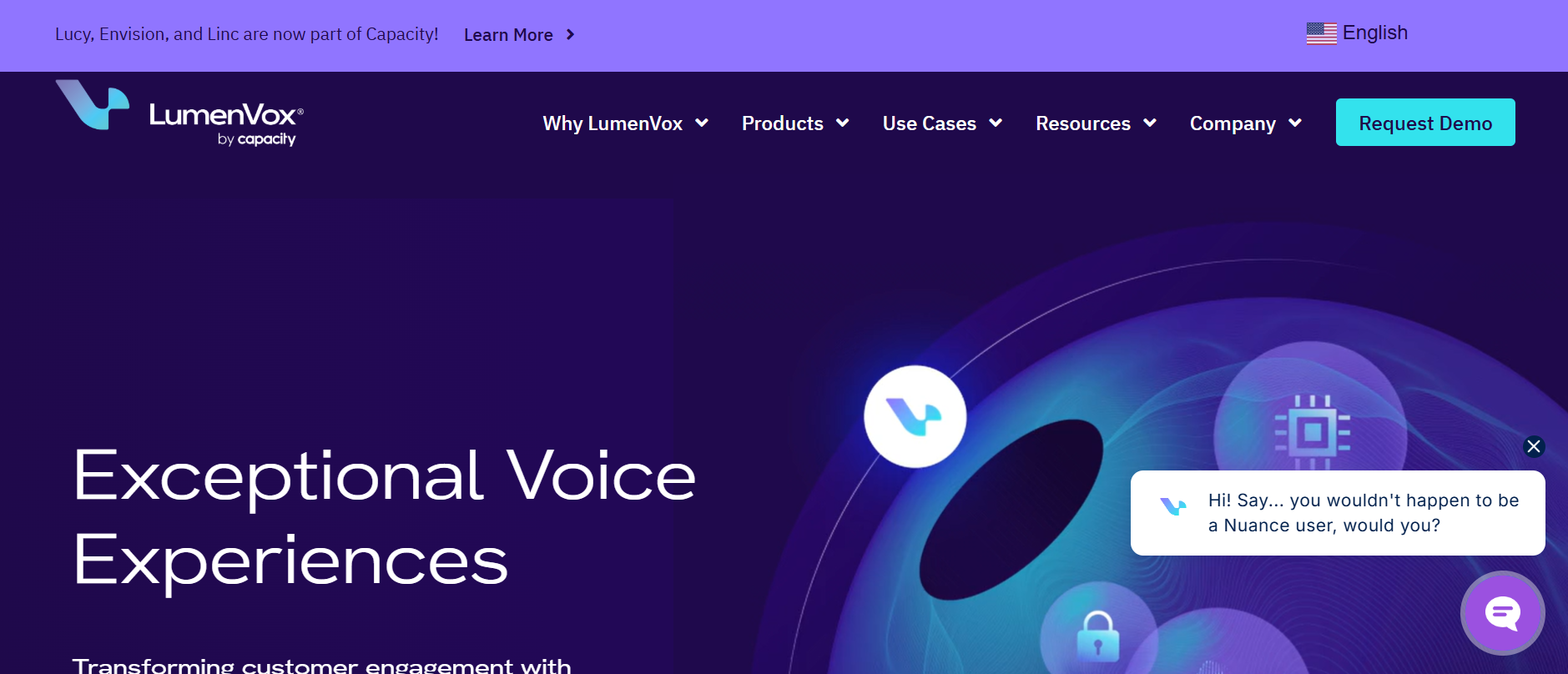
LumenVox is known for its advanced speech recognition and text-to-speech capabilities, making it a reliable choice for building interactive voice response (IVR) systems and customer service applications.
💡Best For
Speech recognition, customer service, and IVR systems.
🤖Technology
Speech recognition, text-to-speech, natural language processing, and natural language understanding.
LumenVox Advantages✅
- Highly accurate speech recognition technology.
- Customisable to fit specific business needs.
- Improves efficiency in customer service operations.
LumenVox Disadvantages❌
- Pricing based on licensing and usage can be costly.
- May require significant setup and training.
- Limited public information on specific features and pricing.
Cognigy
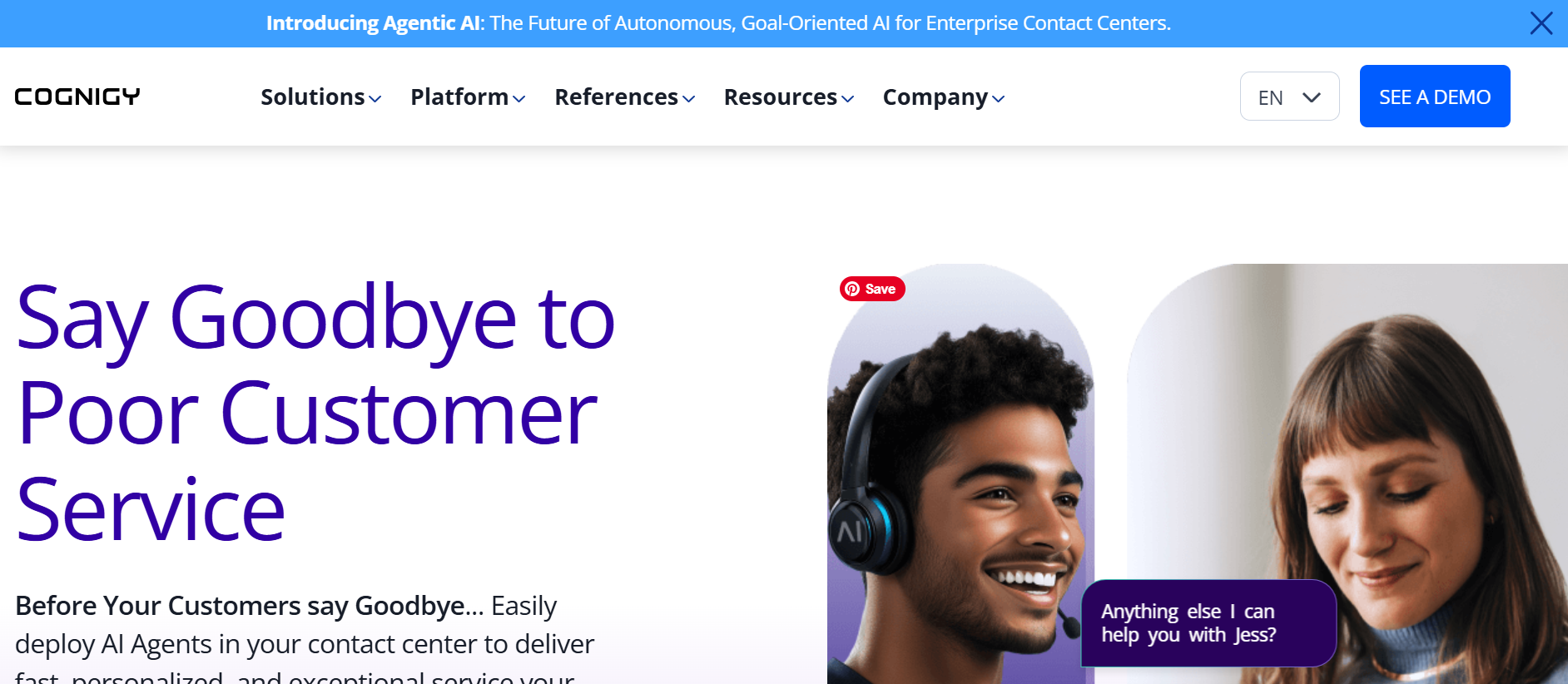
Cognigy is a platform that specialises in customer service automation and voice-enabled chatbots, offering omnichannel communication support and advanced AI-driven interactions.
💡Best For
Customer service automation, voice-enabled chatbots, and omnichannel contact centre software support.
🤖Technology
Natural language processing, natural language understanding, and text-to-speech.
Cognigy Advantages✅
- Provides sophisticated voice interactions that closely mimic human dialogue.
- Offers omnichannel support for a seamless user experience.
- Improves customer engagement with context-aware responses.
Cognigy Disadvantages❌
- Pricing based on edition and usage can be complex.
- May require technical expertise to fully integrate.
- Custom plans can be expensive for some businesses.
VOIQ
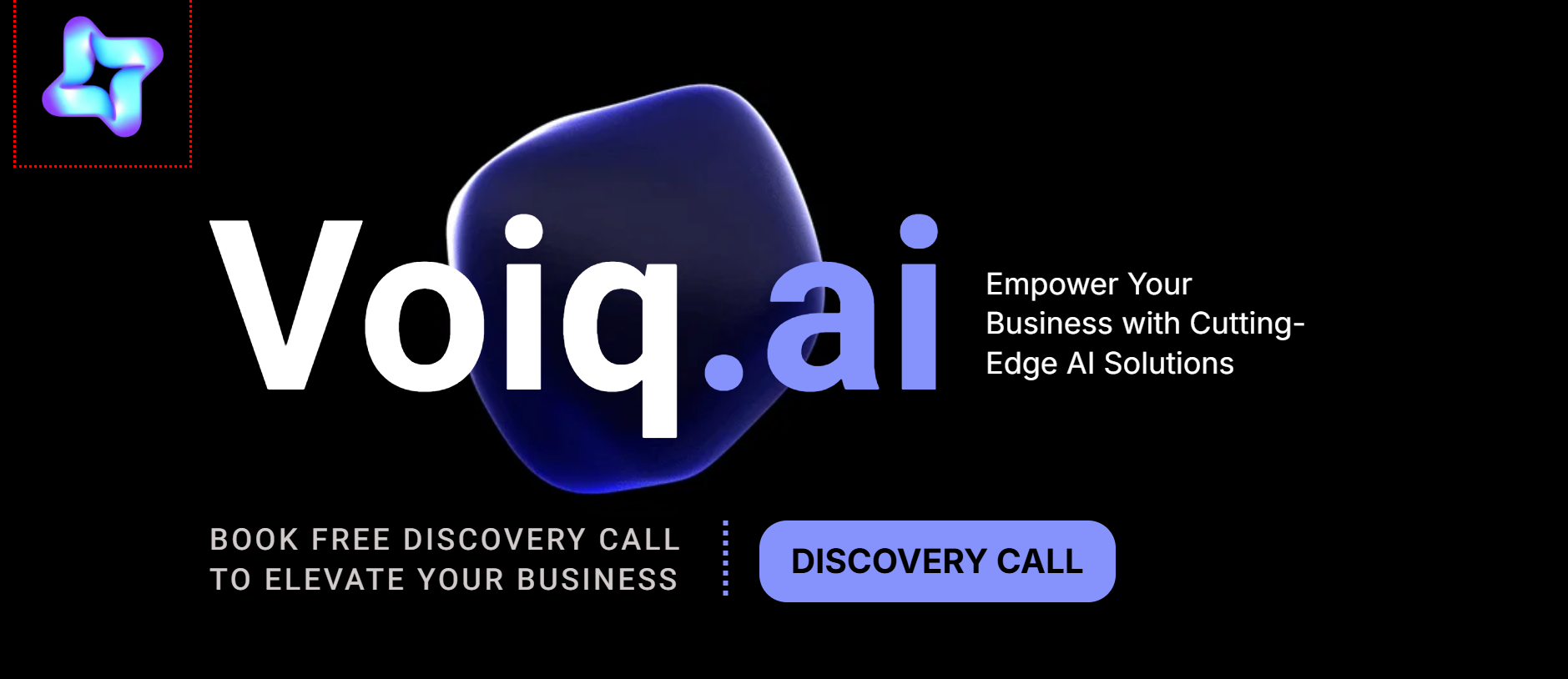
VOIQ is a platform focused on sales automation and customer service, utilising advanced voice technology to enhance outbound calling and customer interactions.
💡Best For
Sales automation, customer service, and outbound calling.
🤖Technology
Natural language processing, automatic speech recognition, and custom voice integration.
VOIQ Advantages✅
- Highly effective for sales automation and outbound calling.
- Customisable to fit specific business needs.
- Improves efficiency in customer service operations.
VOIQ Disadvantages❌
- Custom pricing can be costly for some businesses.
- May require significant setup and training.
- Limited public information on specific features and pricing.
An AI Assistant automates responses to routine customer inquiries so your agents can focus on more important tasks, like connecting in meaningful ways with customers and prospects.
What Is a Voice Chat Bot?
A voice chatbot is an AI-powered application designed to interact with users through spoken language, leveraging advanced technologies such as automatic speech recognition, natural language processing, and natural language generation. Unlike traditional text-based chatbots, voice chatbots enable users to communicate hands-free, using natural speech to initiate and maintain conversations.
At its core, a voice chatbot operates by converting spoken language into text using automatic speech recognition. This technology captures audio input from the user, segments it into small chunks, and then converts these segments into spectrograms – visual representations of sound frequencies over time.
These spectrograms are matched to phonemes, the smallest units of sound in language, and subsequently converted into words and sentences using a language model.
Once the speech is converted into text, the voice chatbot employs natural language processing to interpret the meaning behind the words. Natural language processing involves tokenisation (breaking down text into individual elements), semantic analysis, conversation intelligence, and entity recognition (identifying specific items in the text).
This process allows the voice chatbot to understand the user's intent and extract relevant information from the input.
Following the natural language processing analysis, the voice chatbot's Dialogue Management system takes over. This component decides how the bot should respond based on the context of the conversation, managing multi-turn conversations and ensuring that the bot's responses are relevant and coherent.
The dialogue manager can also prompt for clarification if the user's intent is unclear.
Finally, the natural language generation system formulates a response in a human-like manner. Natural language generation converts the bot's internal data or decisions into natural-sounding language, which is then converted back into speech using text-to-speech technology.
This entire process occurs in near real-time, creating a seamless and natural conversational experience for the user.
Examples of voice chatbots include popular voice assistants like Siri, Google Assistant, Amazon's Alexa, and Microsoft's Cortana. These voice chatbots have evolved to provide responses and services tailored to user preferences and situational context, marking a significant step towards more sophisticated and personalised interactions.
Chatbot vs. Voicebot: What's the Difference?
When it comes to conversational AI technologies, chatbots and voicebots serve distinct purposes and operate in different ways. Here are the key differences between these two technologies:
Mode of Interaction
One of the most significant differences is the mode of interaction. Chatbots primarily use text-based communication, where users type and receive responses in text form. This makes them ideal for platforms like websites, messaging apps, and social media. In contrast, voicebots interact with users through spoken language, converting speech to text and then back to speech using technologies like automatic speech recognition and text-to-speech.
User Engagement
The user engagement experience also varies significantly. Chatbots require a screen for interaction, making them suitable for text platforms where users can see and interact with visual feedback and options. Voicebots, on the other hand, enable hands-free interaction, which is particularly beneficial for scenarios like driving, cooking, or any situation where using a screen is impractical.
Platforms and Devices
The platforms and devices on which these bots are deployed differ as well. Chatbots are commonly found on websites, messaging platforms (such as Facebook Messenger, WhatsApp, or Slack), and some mobile apps. Voicebots are typically integrated into devices without screens, like smart speakers (e.g., Amazon Echo or Google Home), smartphones as voice assistants (e.g., Siri or Google Assistant), and other voice-activated devices such as in-car systems.
Underlying Technologies
The underlying technologies used by chatbots and voicebots also have distinct differences. Chatbots rely on text processing, involving tokenisation, intent recognition, and machine learning models. Voicebots, however, use a combination of automatic speech recognition to convert speech to text, natural language processing to understand the text, and text-to-speech to convert the response back into speech.
Customisation and Integration
The integration and customisation processes for chatbots and voicebots vary in complexity. Chatbots can be easily integrated into apps and websites with text interfaces and are customisable through user-provided information and text inputs. Voicebots require specific hardware support and voice recognition technology, making their integration more complex. However, voicebots can recognise voices and may feature customised voice profiles.
Accessibility
In terms of accessibility, chatbots are generally accessible to anyone who can read and type, making them widely usable. Voicebots, however, offer a more inclusive user experience, particularly beneficial for visually impaired individuals who can interact without needing to read or type.
Development Considerations
The development considerations for chatbots and voicebots also differ. Chatbot development focuses on text processing, dialogue management, and possibly integrating rich media like images and videos. Voicebot development, on the other hand, involves handling issues like background noise, varied accents, and speech idiosyncrasies to ensure smooth voice interactions with clear and understandable synthetic speech.
Leverage artificial intelligence tools like Empower by Ringover gives you valuable insights into not only what matters to your clients, but also your team members’ performance.
How to Make a Voice Chatbot?
Creating a voice chatbot involves several key steps, from planning and development to testing and deployment. Here's a comprehensive guide to help you through the process:
Step 1: Define the Brief and Objectives
The first step is to fill out a brief that outlines the intended functions, target audience, and business objectives of your voice chatbot. This includes detailing the type of interactions the bot will handle, the tone and language it should use, and any specific features or integrations required.
Step 2: Develop Dialog Scripts
Developing effective dialogue scripts is essential for creating engaging and meaningful conversations. These scripts should be crafted considering your business language and the purpose of the bot. The scripts will define the flow of conversations, including greetings, responses to common queries, and how to handle exceptions or unclear inputs.
Step 3: Set Up the Voice Chatbot
This step involves setting up the technical infrastructure of your voice chatbot. You will need to:
- Convert speech to text using automatic speech recognition technology.
- Use natural language processing to understand the text and extract relevant information.
- Train the bot using your dialogue scripts and any additional training data.
- Implement text-to-speech synthesis to generate audio responses.
Step 4: Integrate Necessary Technologies
You may need to integrate various technologies such as:
- Speech-to-text services like Google Cloud Speech-to-Text.
- Natural language processing libraries or platforms like DialogFlow or Amazon Lex.
- Text-to-speech services to generate natural-sounding audio responses.
- APIs for integrating with other systems or services, such as CRM systems or messaging platforms.
Step 5: Test and Refine the Voice Chatbot
Testing is a critical phase where you make test calls to identify any potential issues and refine the bot's performance. This involves analysing the bot's responses, ensuring they are accurate and contextually relevant, and making necessary adjustments to improve the overall user experience.
Step 6: Deploy the Voice Chatbot
Once the voice chatbot is tested and refined, it's time to deploy it on your main contact database or the intended platform. This could be a call centre software like Ringover, a smart speaker, or any other voice-enabled device. Ensure that the bot is integrated seamlessly with your existing systems to provide a cohesive user experience.
Step 7: Monitor and Improve
After deployment, it's essential to continuously monitor the performance of your voice chatbot. Analyse user interactions, gather feedback, and use this data to make improvements. Regular updates and refinements will help in maintaining high customer satisfaction and ensuring the bot remains effective in handling user queries.
How to Implement a Voicebot?
Implementing a voicebot involves several critical steps to ensure seamless integration and effective operation. Here's a detailed guide on how to implement a voicebot successfully:
Step 1: Choose the Right Platform and Technologies
The first step in implementing a voicebot is to select the appropriate platform and technologies. Popular platforms like Amazon Lex, Google DialogFlow, and Microsoft Azure Bot Service offer robust natural language processing capabilities and integration options.
Each platform has its strengths, such as Amazon Lex's integration with AWS services, Google DialogFlow's strong natural language processing capabilities, and Azure Bot Service's ease of use and integration with Microsoft tools.
Step 2: Set Up the Necessary Infrastructure
Once you have chosen your platform, you need to set up the necessary infrastructure. This includes creating an account on the chosen platform, setting up the required APIs (such as speech-to-text and text-to-speech), and configuring the deployment settings.
For example, if using Azure OpenAI, you would need to set up an Azure subscription, an Azure OpenAI resource, and configure the deployment settings for the GPT-4o Realtime Model.
Step 3: Design and Develop the Conversation Flow
Designing the conversation flow is essential for creating a natural and engaging user experience. Use tools like Botmock or Botsociety to visualise and map out typical dialogues. This step involves crafting dialogue scripts that guide the user through various interactions, such as booking a hotel room or handling customer inquiries.
Ensure the flow feels natural and accounts for any inherent latency in converting speech to text and generating AI responses.
Step 4: Integrate Voice Recognition and Synthesis
Integrate voice recognition and synthesis APIs to convert speech to text and vice versa. Tools like Google's Speech-to-Text and Text-to-Speech APIs can recognise spoken language and respond in a natural, human-like voice.
Ensure these integrations are seamless and minimise response time to maintain a real-time interaction experience.
Step 5: Train the Voicebot with Data
Train the voicebot with examples of conversations and user interactions. This involves feeding the bot data that includes various queries, accents, and scenarios it may encounter.
For instance, if building a voicebot for a movie booking app, train it with movie genres, theatre locations, showtimes, and typical customer inquiries. This step ensures the bot can handle a wide range of queries effectively.
Step 6: Test and Refine the Voicebot
Testing is a critical phase where you identify any potential issues and refine the bot's performance. Start with beta testers or a small user group and track how the bot handles different queries and accents.
Use analytics tools like Chatbase or Dashbot to analyse conversations and identify areas for improvement. Address any latency issues and ensure the bot can handle different queries naturally and in a timely manner.
Step 7: Deploy the Voicebot
Deploy the voicebot on the intended platform, whether it's a website, app, smart speaker, or social media channel. Ensure the bot is integrated seamlessly with your existing systems to provide a cohesive user experience. Use monitoring tools with analytics to track its performance and user engagement, and be prepared to address any issues that arise during real-time interactions.
Step 8: Monitor and Improve
After deployment, continuously monitor the performance of your voicebot. Analyse user interactions, gather feedback, and use this data to make improvements. Regular updates and refinements will help in maintaining high customer satisfaction and ensuring the bot remains effective in handling user queries.
This includes expanding the knowledge base, enhancing the bot's understanding of natural language, and reducing latency for a smoother conversation experience.

Benefits of Voice Chatbots
Enhanced Customer Interaction
Voice chatbots provide real-time, contextualised responses that understand human language and intentions. This leads to a smoother, more efficient, and more enjoyable customer experience.
By engaging in natural-sounding conversations, voice chatbots can build stronger customer relationships and make interactions feel more personal and engaging.
Cost-Effective Service
By automating interactions, voice chatbots significantly reduce the costs associated with customer support channels. They can handle numerous queries simultaneously, mitigating the need for extensive human resources and cutting down on operational expenses. This makes them a cost-effective solution for businesses looking to optimise their customer service operations.
Increased Agent Productivity
Voice chatbots can handle routine inquiries, freeing up human agents to focus on more complex and high-value interactions. This enhances overall productivity by allowing agents to concentrate on tasks that require personalised attention and strategic planning.
As a result, the quality of service provided by human agents is improved, and customer satisfaction increases.
Scalability
One of the significant advantages of voice chatbots is their scalability. They can be quickly scaled up or down based on call volume, making them a flexible solution for fluctuating customer service demands. Unlike human agents, voice chatbots can manage thousands of interactions simultaneously without compromising on response time or quality.
Omnichannel Capabilities
Voice chatbots operate across multiple communication channels, ensuring a unified user experience. Whether through voice calls, messaging apps, websites, or social media platforms, these models provide a cohesive interaction regardless of the channel. This capability empowers businesses to meet clients wherever they are, fostering convenience and enhancing customer engagement.
Integrating a voice chatbot into a UCaaS customer service platform such as Ringover can transform the customer experience and employee efficiency. You'll see an immediate uptick in positive reviews on customer surveys, and gain valuable insights into customer performance with individual and team analytics. In the event you're in need of call centre coaching, Ringover has a variety of features to support. You can use call whisper, call recording, call scripts, radio coach, and more to optimise your call centre's performance.
Integrating AI in customer service is key to levelling up your call centre's operations, and can easily be achieved by deploying conversation intelligence software like Empower by Ringover. When used in conjunction with Ringover's VoIP software, you'll create an AI phone system capable of automatically transcribing and summarising calls. More than that, Empower identifies specific call moments so you can easily search through your call records using keywords or topics.
Data Collection and Analysis
Voice chatbots excel at collecting and processing vast amounts of information from interactions. They gather valuable data, including customer preferences, frequently asked questions, and common issues.
This data provides actionable insights for informed business decisions, helping in refining products or services and strategising future initiatives.
24/7 Availability
Voice chatbots extend continuous support, available round the clock. Customers appreciate the convenience of accessing assistance at any time, regardless of the hour or time zone. This ensures satisfaction, enhances reliability, and fosters brand trust by showcasing the brand's commitment to exceptional customer service.
Personalised Approach
Customers receive personalised interactions from voice chatbots that meet their preferences. Utilising data, these systems offer tailored recommendations, enhancing engagement and streamlining interactions.
This approach strengthens the relationship between the consumer and the brand, leading to increased customer satisfaction and customer loyalty.
Accessibility
Voice chatbots make services more accessible to individuals with disabilities, such as those who are visually impaired or have difficulty typing. They also cater to users who simply prefer voice interactions, providing a more inclusive and user-friendly experience.
Resource Optimization
By handling routine queries and tasks outside of regular business hours, voice chatbots allow human agents to focus on more complex and high-value interactions during their shifts. This optimisation of resource use ensures that businesses can serve a global customer base efficiently without the need for 24-hour human staffing.
Drawbacks of Voice Chatbots
Limited Understanding of Nuances and Context
Voice chatbots often struggle with understanding the nuances of human language, including context, accents, and variations in pronunciation. This can lead to misinterpretations of user queries, resulting in inaccurate or unsatisfactory responses. For instance, noisy environments or different accents can significantly impact the accuracy of speech recognition, leading to errors in understanding user commands.
Emotional Intelligence and Empathy
Voice chatbots lack the emotional intelligence and empathy that human agents possess, making them ill-equipped to handle emotionally charged interactions. They may not be able to discern and appropriately respond to users' emotions or sentiments, which can be important in addressing sensitive or complex customer issues.
Privacy and Security Concerns
The use of voice chatbots raises significant privacy and security concerns. Since voice interactions involve recording and processing spoken words, there is a risk of sensitive information being inadvertently recorded or compromised. Ensuring the secure storage and transmission of voice data is essential to maintain customer trust.
Reliance on Internet Connectivity
Voice chatbots typically require a constant internet connection to function accurately. This reliance on internet connectivity can be a limitation in areas with poor or no network coverage, rendering the bot ineffective in offline scenarios.
Handling Complex Queries
Voice chatbots can struggle with handling complex or multifaceted inquiries that require a deep understanding of specific topics. These bots may not be able to provide accurate or satisfactory responses to intricate requests, leading to user frustration and the need to escalate the issue to a human agent.
Multitasking Limitations
While voice chatbots are hands-free, they may struggle with multitasking commands or handling complex tasks that involve multiple steps. This limitation can make certain tasks more challenging or time-consuming to accomplish compared to traditional interfaces.
Initial Investment and Integration Challenges
Developing, implementing, and fine-tuning effective voice chatbots require significant upfront investment in terms of technology, resources, and expertise. Integrating voice chatbots with existing systems and databases can also be complex, adding to the initial costs and challenges.
User Resistance to Automation
Some customers prefer speaking to human agents due to mistrust of technology or a desire for a more personal touch. This resistance to automation can lead to frustration when users are forced to interact with voice chatbots instead of human agents.
Technical Errors and Glitches
Despite advancements in call centre technology, voice chatbots are not immune to technical errors and glitches. These errors can lead to critical missteps in customer service, such as providing misleading or entirely incorrect information, which can damage customer trust and the brand's reputation.
In Conclusion
Voice chatbots provide 24/7 customer service, scalability, and valuable data insights, while also enhancing customer engagement and accessibility. However, they also come with challenges such as limited understanding of nuances, emotional intelligence gaps, and technical complexities. By understanding these benefits and drawbacks, businesses can make informed decisions to integrate voice chatbots into their customer service strategies, ultimately improving customer satisfaction and operational efficiency.
To start taking your call centre to the next level, consider launching a VoIP phone that provides omnichannel contact centre software like Ringover. You can try Ringover for free, and even check out its AI tool Empower, which also offers a free trial.
Voice Chatbot FAQ
Is there a voice AI chatbot?
A voicebot, or voice chatbot, is a conversational robot that can understand, interpret, and analyse voice requests expressed by an individual and respond vocally using everyday language. It uses conversational artificial intelligence to teach robots to understand human language and the intentions conveyed by words.
Is there an AI chat with voice?
Yes, there is an AI chat with voice capabilities. Voicebots, such as Alexa, Siri, and Google Assistant, are examples of voice chatbots. These devices use automatic speech recognition, natural language understanding, and text-to-speech technologies to convert spoken language into text, analyse the user's intent, and generate a vocal response accordingly. This allows users to interact with the chatbot through voice commands rather than typing, providing a more natural and efficient user experience.
Published on January 17, 2025.
